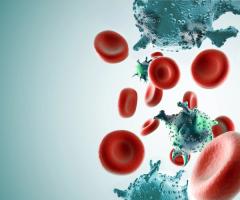
The Role of KMT2Ar/NPM1 and Menin in Relapsed/Refractory AML
Ghayas C. Issa, MD, discusses the pathway between KMT2A rearrangements/NPM1 and menin in relation to leukemia cells and how these genetic abnormalities impact prognosis.
Episodes in this series

This is a video synopsis/summary of an OncView® featuring Ghayas C. Issa, MD.
Issa explains that KMT2A rearrangements involve 2 chromosomes abnormally fused and resembling crossed wires, leading to abnormal signaling and leukemia development. For this abnormal gene expression to occur, it requires the cofactor menin. By disrupting menin-KMT2A interaction, the abnormal leukemia-causing gene expression is shut down.
He elaborates on prognostic nuances of the 2 main genotypes targeted by menin inhibition. Newly diagnosed NPM1 mutant acute myeloid leukemia (AML) usually has a good prognosis with standard therapy and high remission/cure rates, though a small subset relapses. By contrast, newly diagnosed KMT2A leukemias most often have adverse prognosis regardless of the specific translocation. While 9;11 translocations fare slightly better than other KMT2A variants, the difference is minimal, especially in older patients or those not getting intensive chemotherapy.
In the relapsed/refractory setting, outcomes tend to be poor regardless of genetics. However, they are particularly dismal with KMT2A rearrangements. For relapsed NPM1 mutant AML, presence of the mutation does not affect prognosis; once relapsed, it confers similarly poor outcomes as other relapsed acute leukemias.
Video synopsis is AI-generated and reviewed by Cancer Network® editorial staff.
Newsletter
Stay up to date on recent advances in the multidisciplinary approach to cancer.


































































































